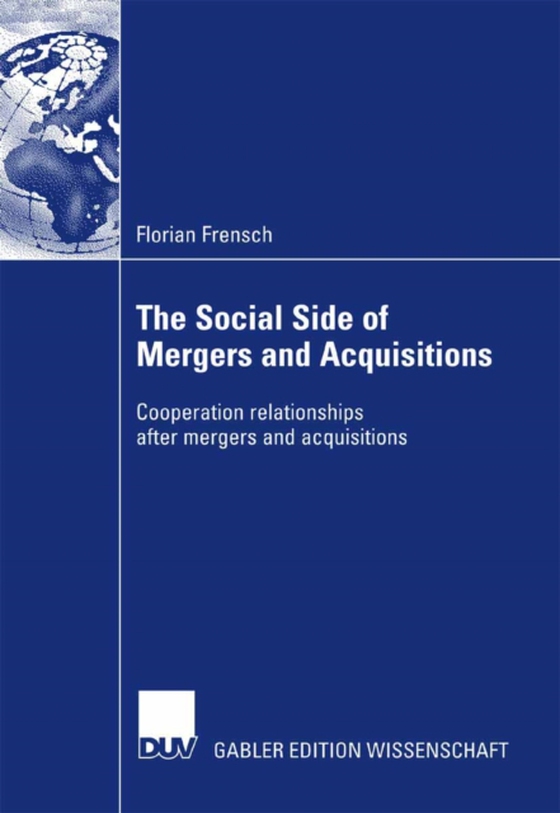
Social Side of Mergers and Acquisitions e-bog
875,33 DKK
(inkl. moms 1094,16 DKK)
The latest increase in numbers of mergers and acquisitions (M&As) and the latest increase in size of M&As raise the question, whether M&As can meet the expectations. This question is relevant in two ways, from an economic as well as from a social perspective. Despite its central economic importance, many mergers and acquisitions fall short of their objectives. In his work, Florian Frensch sees ...
E-bog
875,33 DKK
Forlag
Deutscher Universitatsverlag
Udgivet
3 december 2007
Genrer
Business innovation
Sprog
English
Format
pdf
Beskyttelse
LCP
ISBN
9783835095762
The latest increase in numbers of mergers and acquisitions (M&As) and the latest increase in size of M&As raise the question, whether M&As can meet the expectations. This question is relevant in two ways, from an economic as well as from a social perspective. Despite its central economic importance, many mergers and acquisitions fall short of their objectives. In his work, Florian Frensch sees cooperation relationships between employees and management of previously separate firms as the key success factor for the realization of synergies and thereby for the M&A success. Cooperation depends on different factors on the environmental, the firm, team and the individual level. Grounded on extensive literature search, Florian Frensch investigates which individual factors of employees and which dyadic factors of relationship partners affect the cooperation between employees of previously separated firms. With the help of social network analyses, Florian Frensch investigates cooperation relationships after M&A-transactions in two case studies. Unlike previous studies, he asks employees on the lower operative levels of the firm instead of using key informants in the management ranks. In order to use social network analysis in larger groups, Florian Frensch develops an innovative approach for gathering network data with the help of a dynamic computer based questionnaire, which allows him to conduct a full network analysis in a group with ~ 400 employees.
 Dansk
Dansk

